AI Literacy Workshop
AI Literacy for KS2 upwards
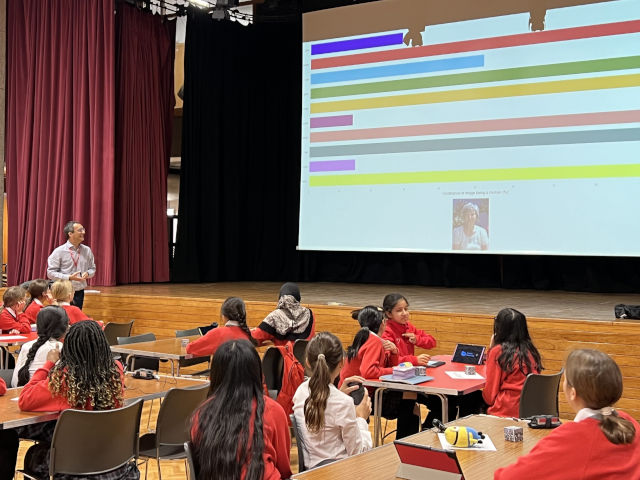
AI is rapidly changing our lives and how we use computers to solve problems. All children benefit from understanding how AI works, why it sometimes makes mistakes and how to use it responsibly.
These highly interactive and entertaining workshops demystify AI and encourage critical thinking over its use. All the content emphasises the vital role which humans have to play in the ongoing development and use of AI. Activities for a typical 90 minute session are selected from the list below, to match the age and prior experience of the class. This makes the workshops suitable for everyone, from absolute beginners in Year 4, through to older pupils who are considering more sophisticated ethical issues.
Menu of possible activities
This is a list of every available activity with a combined duration of over 3 hours, however we would only deliver a small selection to students within a single session. We will suggest suitable combinations or you are welcome to pick your own. All the activities are undertaken in teams of 2-4 students.

What is AI and how does it differ from coding?
Set the scene, as we see why traditional rules-based coding struggles with some problems which humans find easy, such as recognising cats. We share definitions of AI, introduce Machine Learning and the students hear about their new roles as AI Engineers.
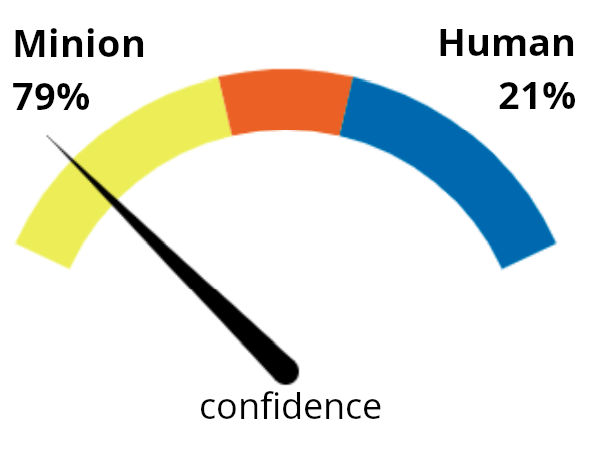
Build an AI Minion Detector
Working in teams, pupils build their own AI models capable of telling the difference between Humans and Minions. Once the training images have been processed, teams compare the accuracy of their AI systems and observe how their different choices of training images impacts performance. They also learn why the AI algorithm does not always correctly recognise an object. The long version of this activity gives students a chance to add further training images and re-test their models, to see if they can address the issues we identified earlier.
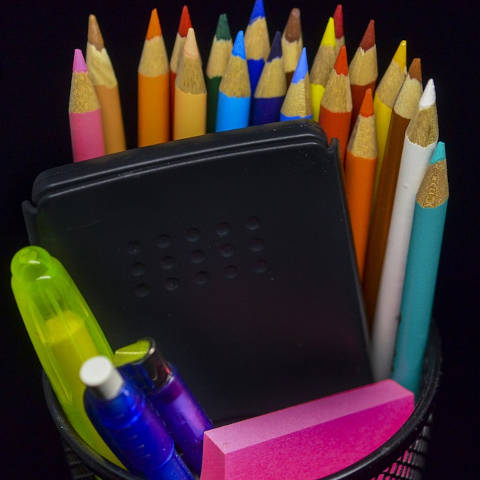
Build an Image recogniser
Following on from the Minion Detector, students are given the freedom to build an AI image recogniser, trained on any objects they can find in the room. They can chooose up to five different categories of objects to recognise, however the more categories they choose, the harder the task becomes. This activity requires creativity and problem-solving skills in order to train a reliable AI model.
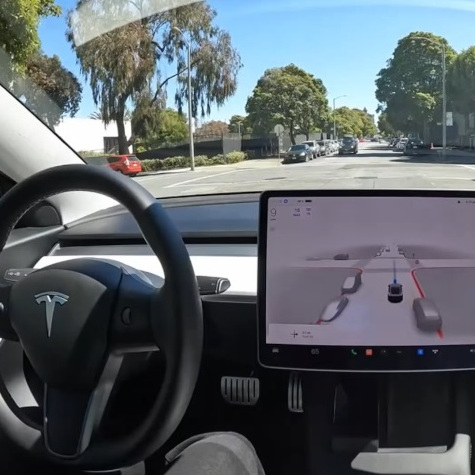
Object Detection
See how humans annotate training images to create AI with a richer understanding of its surroundings. Identifying moving objects is a core technology behind self-driving cars, on which students share their opinions.

How do AI models learn to 'see'
Students discover how a computer sees objects with a camera and what happens behind the scenes when the AI model is being trained to recognise them. This offers them a deeper understanding of computer vision with Machine Learning, and counteracts the magical view which is often held of AI.

Knowledge check
Short quizzes for the teams, which check their understanding of Machine Learning, selecting training data and interpreting results.

Applications of AI
We showcase a range of potential uses of AI, from video recommendation engines, to sorting waste and medical diagnostics. The exact applications are selected to be relevant to the content of the workshop. Students critically evaluate each example and vote on whether it is an appropriate use of AI.

Creating images and videos with AI
A safe introduction to Generative AI, where students create their own moderated images and videos from a restricted set of prompt words. The results appear convincing until we start seeing errors, known as hallucinations. Students find out why Taylor Swift might be shown as having three legs.
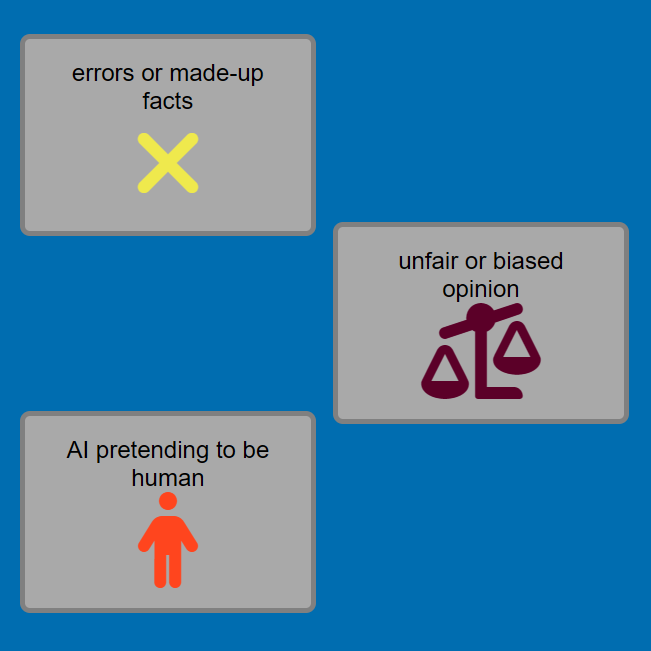
Chatbot response evaluation
Teams hold conversations with an AI chatbot and evaluate its responses for potential signs of inaccuracy, bias or anthropomorphism. The ability to critically judge AI-generated content is a key skill and this unique activity lets students compete to correctly spot the most issues.

Spotting AI-generated content
Students have a go at identifying whether images or music have been generated by AI or humans. We discuss whether AI can ever match human creativity and the potential impact on creative jobs.
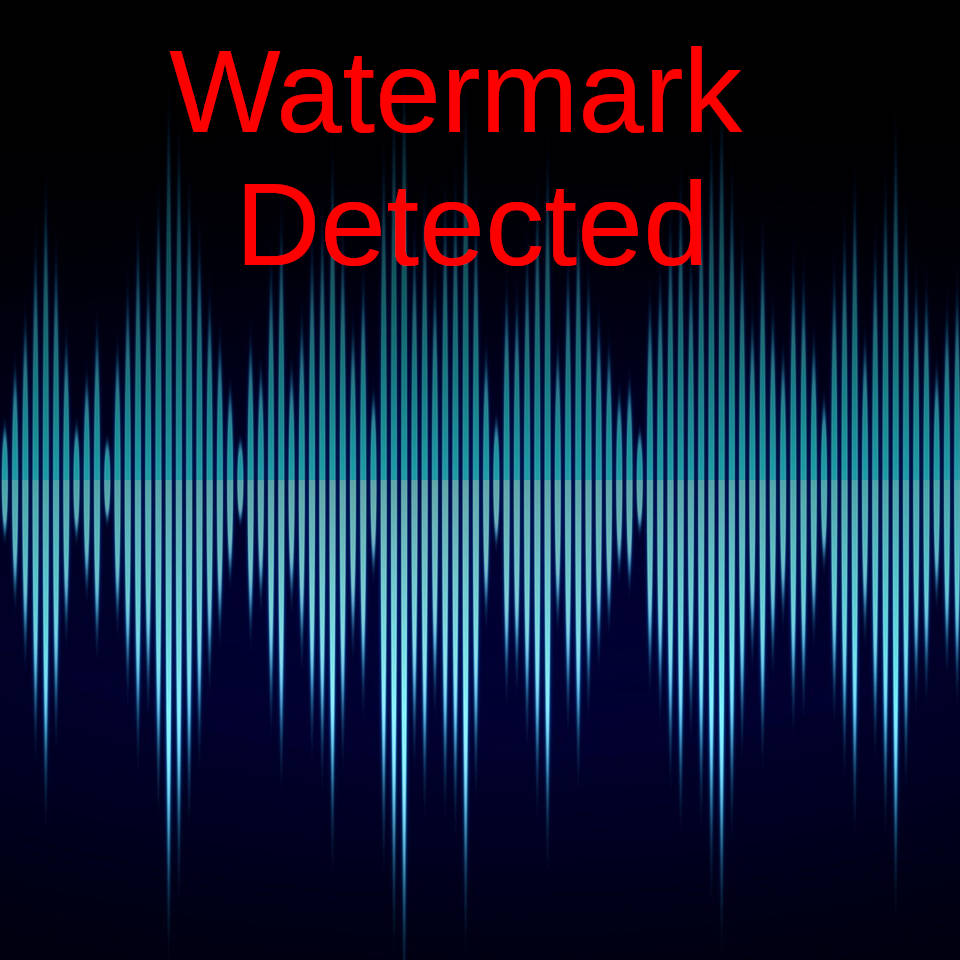
Copying a voice with AI
A live offline demo of voice cloning, using an adult's voice with their consent. Students hear its capabilities in a safe setting and understand potential risks. This leads into a discussion about responsible development of AI and whether digital watermarks in AI content are a practical solution.

Bias in AI
Students generate images using AI, then test for any bias in the results. We discuss where this bias comes from and how it could be tackled.
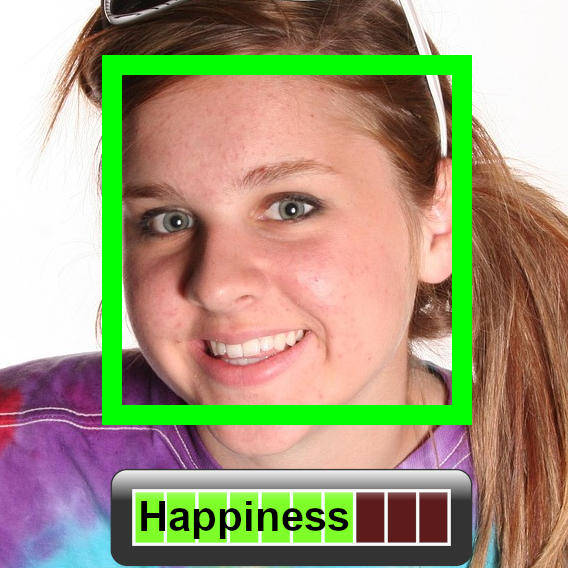
Face Detection
Working in teams, students learn how AI applications learn to recognise faces. We then push the technology further to detect facial expressions and decide whether AI can demonstrate emotional intelligence.
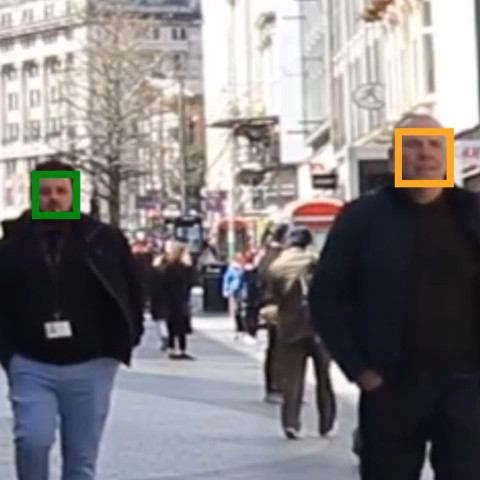
Facial Recognition
Students explore a mathematical simulation of facial recognition in crowds, as used by police. We discuss the implications of false positives and false negatives in this AI application and investigate the effects of adjusting its sensitivity. This activity illustrates how the accuracy of AI decision-making algorithms can be measured and starts an important discussion about data privacy and personal freedoms.

Tech Solutionism
Students explore a simulated scenario in which an AI application becomes progressively more ambitious and invasive. This activity illustrates many ethical issues around AI such as bias, errors and data privacy and why AI's use must always be justified.

Distributing wealth from AI
An eye-opening activity where the students attempt to share the profit from AI generated art with all the people who have contributed to its output. We highlight the vital, but often hidden role of the artists and social media users who created the training data, the data labellers who annotated it and the engineers who built the AI system.
Equipment
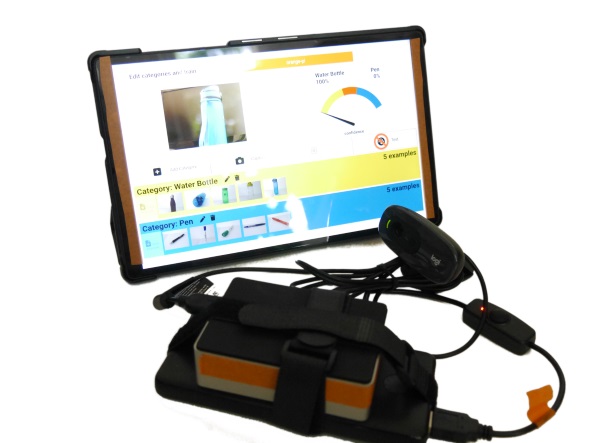
All equipment is provided and no school IT equipment or network access is required, apart from a screen or projector to which we connect our laptop.
Each team receives a touchscreen tablet and a battery-powered Raspberry Pi mini computer, with a webcam attached. They use the tablet to interact with the Raspberry Pi, control the camera, view results and participate in team quizzes.
The tablet and Raspberry Pis do not have any internet access and are fully locked down so that only the workshop content is accessible.
Session format
The format is very flexible, however the majority of our sessions last 90 minutes for 30-40 pupils at once, which ensures time for multiple activities, discussions and plenty of interactivity. Pupils work in teams and we supply equipment for up to 15 teams. We have run successful sessions for up to 90 pupils, although larger teams may reduce the level of individual interactivity.
We can also deliver bespoke assemblies, with engaging demonstrations and plenty of audience participation.
Our material is intended for pupils in Years 4 to 10 and we are also experienced in adapting content and delivery for SEN pupils.
No prior knowledge is needed and none of the activities require any coding.
The workshop can be run in any classroom or hall with tables and does not need to be where school computers are situated.
Please get in touch to discuss your requirements.
AI curriculum links
UNESCO AI competency framework
The workshop content has been mapped to UNESCO's AI competency framework for students , which suggests four aspects of AI literacy, each with three levels of progression of curricula goals. You can view the mappings of each activity to the goals by clicking the coloured icons at the end of their descriptions.
SEAME framework
The workshop content also aligns with the Raspberry Pi Foundation's SEAME framework , which suggests four groupings of learning objectives when teaching AI:
- SE - Social, Ethical considerations: e.g. bias, privacy, impacts on employment
- A - Applications e.g. knowing a range of AI applications and understand their difference with rules-based coding
- M - Models e.g. knowing methods of training an AI model such as Machine Learning
- E - Engines e.g. how the model works, feature detection in neural networks
National curriculum links
The workshop content links with the National Computing Curriculum, as well as promoting data literacy and data ethics:
Key Stage 2:
"Can evaluate and apply information technology, including new or unfamiliar technologies, analytically to solve problems."
"Select, use and combine a variety of software on a range of digital devices to design and create a range of programs, systems and content that accomplish given goals."
"Use technology safely, respectfully and responsibly."
Key Stage 3:
"Can evaluate and apply information technology, including new or unfamiliar technologies, analytically to solve problems."
"Understand a range of ways to use technology safely, respectfully, responsibly and securely, including protecting their online identity and privacy."
Safety and privacy
Information about safeguarding, safety measures and data privacy can be found on our Safety page.
Cost
- £450 for a half-day visit (1-2 workshops)
- £650 for a full-day visit (3-4 workshops)
This workshop is eligible for the Neon bursary scheme for schools.
We do not charge VAT on these prices. Our timings are flexible so please get in touch to discuss your requirements.
These prices are for visits to schools within the M25 area of London. Please get in touch to enquire about visits elsewhere.